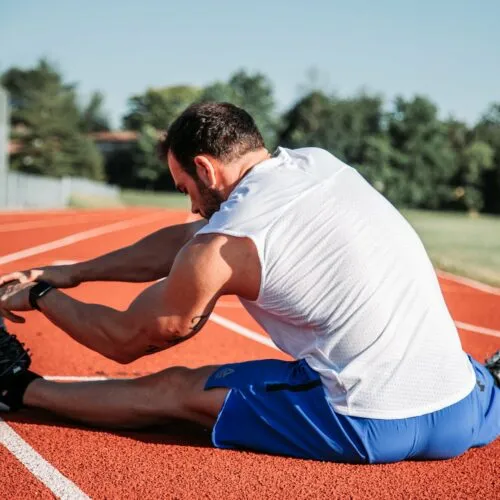Aches and pains seem to creep up as we age, but it is possible to turn back the clock by remaining strong, flexible, and agile.
Do any of these recent quotes from clients sound familiar to you?
- “I want to play on the floor with my grandchildren, but have so much trouble getting up.”
- “I’m so stiff in the morning when I can barely get my socks on. “
- “I feel like I look older than I am because my shoulders are so slumped forward.”
If you can relate to any of these sentiments that I bet you have chalked up the difficulty to aging. And maybe it is true that you aren’t as flexible as you were a decade ago. However, that doesn’t mean you have to continue down that path.
Or perhaps you are right now thinking to yourself . . . “thank goodness that’s not me because I have been able to remain so active.”
Maybe you hop out of bed in the morning and dress with ease. You continue to jog each day and have no trouble hopping up off the floor. Then, consider these things . . .
- Is your golf or tennis swing not as fluid as it used to be?
- Does your workout routine seem harder than it should be?
- Are you constantly getting injured or needing more time to recover?
Well, these are all signs that you are losing flexibility and that goes hand in hand with aging. We aren’t talking “old age” here, just advancing age. Which is something we all are experiencing, but also something we all can do something about.
What’s actually going on with our flexibility?
It’s natural that our flexibility declines as the years go by because tissues in the body become more stiff. And if you don’t do anything to improve that flexibility, the muscles will shorten.
This not only affects our ability to touch our toes, but also our posture, performance, and ability to enjoy everyday activities. Basically little things become harder to do.
What might just be a minor annoyance – like struggling to snap your bra in the back – can become a self-perpetuating problem. We can’t move as well, so we move less.
The problem is, when we move less we further decrease our joints’ range of motion, which accelerates the degenerative process. This further reduces the activities we can enjoy with ease and increase the strain on the muscles and joints. And on and on it goes until we find we can no longer do the things we love.
Before you realize it, even if you’re only in your 40’s, 50’s, or 60’s, you’re looking and feeling ‘old’ and not always able to do the things that you would like to do. In this way, maintaining your flexibility can slow down aging…or at least make you look and feel younger.
Let’s Stop Aging Prematurely!
I am here to tell you that you can regain your flexibility at any age, because your body is resilient and adaptable. You just have to give it the resources it needs to regain what you might have lost.
Or you do have the option of aging faster by allowing your body to become stiff, weak and frail. But, let’s assume this is a path you are interested in taking.
The key to stretching is to extend the tissue to its full length. If you hold that tension long enough, the muscle will be longer once it relaxes again – like stretching out an elastic band. The more often you stretch your muscles, the more flexible and supple they become.
The result will be increased range of motion, reduced risk for muscle and joint injury, reduced joint and back pain, improved balance and posture, and increased potential for gaining strength.
If you have a condition that affects your muscles and joints, such as arthritis, past surgery, poor balance, or pain it is best to speak with a physical therapist who can evaluate your particular needs and tailor a stretching program to meet you needs.
You can also participate in group fitness that focuses on flexibility such as Yoga, Pilates, Barre, or Tai Chi. Be sure to find a reputable center that has qualified specialists and consult with your healthcare provider to identify any modifications that might need to be made.
However you choose to stretch your body, it would ideally be a daily practice. That could be as simple as 15 minutes on your bedroom floor in the morning. If not daily, at least aim to participate in a program three times each week.
When your body is fit and flexible you will look and feel younger!
For further instruction on regaining or maintaining flexibility in order to be fitter and healthier with each passing birthday, click the link below. During a free phone consult a Doctor of Physical Therapy can help you discover the next best step to optimize your body.


